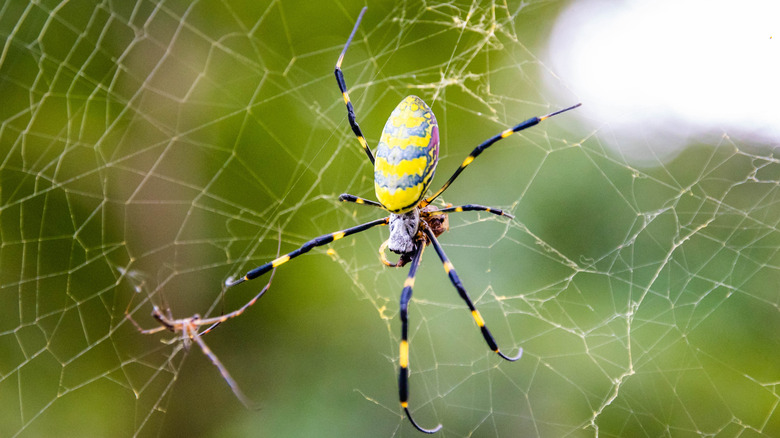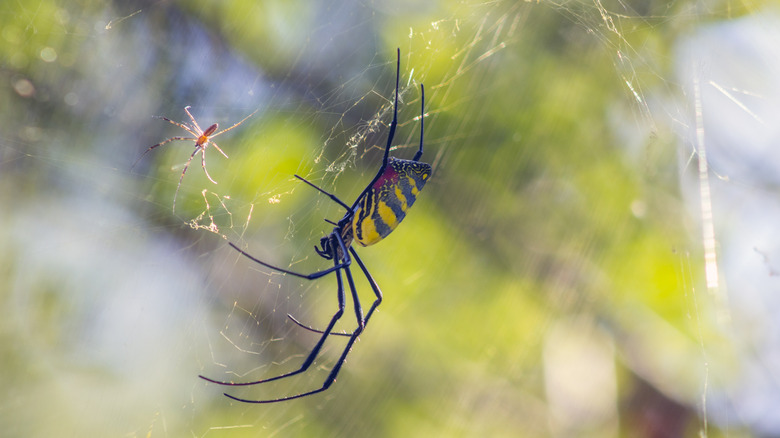The Giant Spiders Taking Over This National Park Are Terrifying To Behold But Harmless To Humans
Have you recently taken a stroll through Great Smoky Mountains National Park and thought, "Wow, what's that bright yellow and gray striped arachnid building a massive golden web overhead?" Meet the joro spider, also called the Trichonephila clavata. Originally from East Asia, joro spiders are invasive, orb-weaving arachnids whose appearance has people stopping in their tracks. The females can reach up to 4 inches, while the males are much smaller. Despite their striking features, they are harmless to humans. However, scientists are concerned about the challenges they pose to native spiders.
Joro spiders initially showed up in the U.S. in Georgia in 2014, likely via cargo ships. Over the past decade, they've spread northward and have popped up across the southeast, including in the Great Smoky Mountains, America's most visited national park. The spiders have mostly been spotted around Cades Cove, an area within the park where hikers are almost guaranteed to see a bear.
What to do when spotting a joro spider
A large number of arachnids are venomous (including in Texas, which has one of the highest numbers of venomous spider species). Joro spiders are indeed venomous, but they aren't dangerous to humans. At most, their bite might result in mild symptoms like stinging or itching. Fortunately, these spiders tend to avoid humans.
Joro spiders are known for weaving large silk strands of web that can stretch up to 10 feet, mainly near areas people frequently visit, such as lean-tos. However, the primary concern scientists have with this invasive species is its ecological impact. In August 2025, Great Smoky Mountains National Park warned on Facebook that joro spiders compete with native orb-weaving species. In areas where joro spiders inhabit, populations of native spiders have been declining. Their ability to withstand colder climates gives them a survival advantage over similar species. This allows them to expand to new places more easily.
To monitor their spread, the park is now turning to visitors at the Great Smoky Mountains for help. Hikers who spot a joro spider are encouraged to take a photo and upload it to the iNaturalist app. This app helps users identify plants and animals, as well as share information with scientists. "Your observations will provide valuable data to help us better understand and manage this invasive species," the park explained. "Together, we can protect the Smokies' natural balance."

